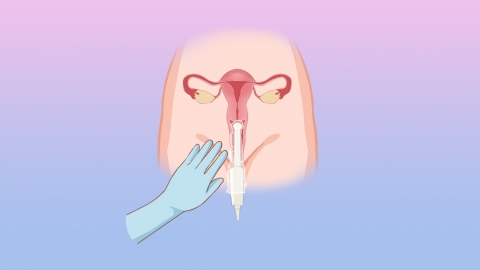How to eliminate pelvic effusion as quickly as possible
Generally speaking, there is no such thing as "how to eliminate pelvic effusion the fastest." Pelvic effusion may be caused by factors such as menstrual cycle effects, follicular rupture during ovulation, pelvic inflammatory disease, inflammation spreading from adjacent organs, endometriosis, and others. Improvement can be achieved through general treatment, medication, and other measures. Prompt medical consultation and treatment according to medical advice are necessary. The details are as follows:

1. Menstrual cycle effects: During menstruation, due to hormonal changes, the pelvic mucosa becomes congested. Engaging in vigorous activity at this time may cause menstrual blood to flow backward into the pelvic cavity, resulting in a small amount of pelvic effusion. Usually, no special treatment is required; simply resting and avoiding strenuous exercise during menstruation allows the fluid to be absorbed naturally.
2. Follicular rupture during ovulation: During ovulation, the mature follicle ruptures to release an egg. After rupture, a small amount of fluid may leak out and accumulate in the pelvic cavity, forming pelvic effusion. No special treatment is required, as the fluid can be absorbed naturally. If discomfort occurs, applying a warm towel compress to the lower abdomen can help alleviate symptoms.
3. Pelvic inflammatory disease (PID): PID refers to inflammation of the reproductive organs within the pelvis, surrounding connective tissues, and pelvic peritoneum. Bacterial and viral proliferation in the pelvic region leads to increased secretions and the production of significant exudate. This exudate accumulates in the pelvic cavity, forming pelvic effusion, which may manifest as lower abdominal pain. Follow medical advice to use antimicrobial medications such as metronidazole tablets, doxycycline hydrochloride tablets, and minocycline hydrochloride tablets.
4. Inflammation spreading from adjacent organs: Inflammatory conditions such as appendicitis or peritonitis in adjacent organs may spread to the pelvis, causing increased fluid accumulation and resulting in pelvic effusion. Under medical guidance, anti-inflammatory medications such as roxithromycin dispersible tablets, amoxicillin granules, and penicillin V potassium tablets may be used.
5. Endometriosis: Endometriosis refers to the growth of endometrial tissue outside the uterine cavity. Ectopic lesions can cause inflammatory reactions in the peritoneum, leading to fluid exudation. This fluid accumulates in the pelvic cavity, forming pelvic effusion, often presenting as dysmenorrhea. Medications such as ibuprofen sustained-release capsules, medroxyprogesterone acetate tablets, and norethisterone tablets should be used according to medical advice to relieve pain and supplement progesterone levels.
In daily life, individuals should strengthen self-management and protection, maintain a healthy lifestyle, and undergo regular gynecological examinations.





